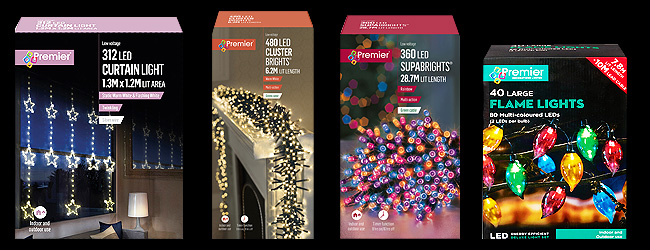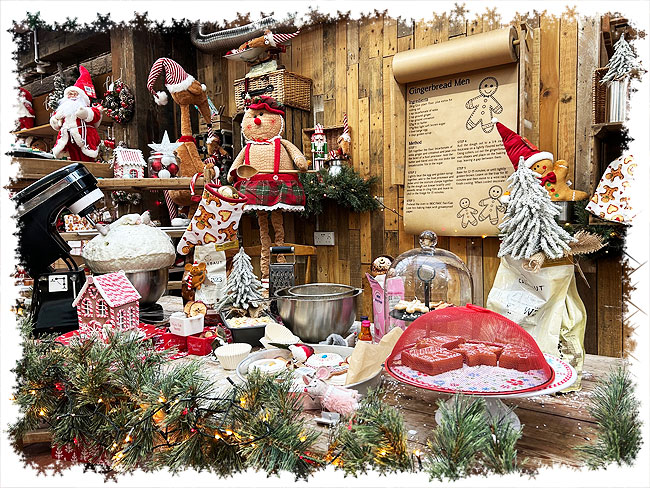Frequently Asked Questions
Any questions? there's some FAQ's further down this page, but just ask our staff. Everyone has their own little "issue" with Christmas lights,
but through years of experience our staff will usually have the solution for you. So when it’s time to light up your tree, your windows, your
house or even your whole garden; take a look at our extensive range and make this years Christmas sparkle like never before!
 “How many lights do I need for my tree ?”
“How many lights do I need for my tree ?”
The simple answer is as many as you like! As a general rule see the list below, it details how many we use. You may think if your tree is in a corner
or against a wall, you won’t need as many lights, however your tree will look odd if the lights aren’t evenly spread, with decorations you can sometimes
get away with not having so many “round the back” but lights are unforgiving, you don’t see the lights, you see the gaps too.
As a guide line we use the following table:
Tree Lights
4ft - 200
5ft - 300
6ft - 400
7ft - 600
8ft - 800
Remember: as trees get bigger the extra bit is at the bottom, which is the biggest bit and therefore needs more lights.
The set of lights I like are flashing, but I’d like them to be static
Don’t worry, all the multi function light sets we sell are fitted with controllers and you can adjust them to your preferred effect, one of which is always static.
Can I use ‘outdoor lights’ inside ?
Basically, yes. In the past outdoor lights were always big and got very warm to the touch. With the advent of LED technology, outdoor lights have got smaller
and brighter but emit no heat at all, they are, therefore perfectly safe to use in the house.
“Every year when I get my old lights out they don’t work, why ?”
The most common cause of malfunctioning lights is moisture. If you store your lights in the loft, or the garage, chances are that during the summer months
they get warm during the day and as the temperature drops at night condensation forms inside the bulbs. These tiny deposits of water stay in the bulbs until
you plug them in, and then they’re history. To avoid this effect, either store your lights away from moisture, a dry cupboard in the house is ideal, failing
that when you get your lights out this year, leave them in a warm dry place for a couple of days before you plug them in.
 White LED light sets are too bright for inside the house.
White LED light sets are too bright for inside the house.
Look out for “warm white” or “natural white” light sets, these are designed to give a more traditional look to the lights and are a little duller,
ideal for avoiding the glare of pure white LED’s.
Why can’t I get replacement bulbs for my LED light set ?
Primarily you shouldn’t need to; an LED bulb should last between 60,000 and 100,000 hours. Although it’s fair to say that occasionally a bulb will go out,
the loss of one bulb should not affect any of the others. The old filament bulbs would take out sections of lights or even the whole set if just one bulb blew.
Having non replaceable bulbs also keeps the cost of manufacturing the lights down, a set of LED’s built with bulb holders and pop out bulbs would cost
more than twice as much.
Why are different colours of LED’s more expensive than others?
It’s down to the manufacturing process, different colours use different semi-conductors to create the light. The cost of producing red LED’s is cheaper than white or blue.
LED’s look great but they’re just too expensive…
Not true! They actually save you money! Using a direct comparison of a standard set of 100 led’s and a conventional set of 100 filament bulbs, if you run the lights for 6 hours
a day for 4 weeks, the LED’s will save you around £15, and that’s just for one set. So buying just one set of LED’s will pay for itself this Christmas and because they’re durable
you’ll have them year after year, saving you money every time!
We hope this list can answer most of your questions, if not just ask one of our festive lights sales team, we’re always happy to help.













 White LED light sets are too bright for inside the house.
White LED light sets are too bright for inside the house.